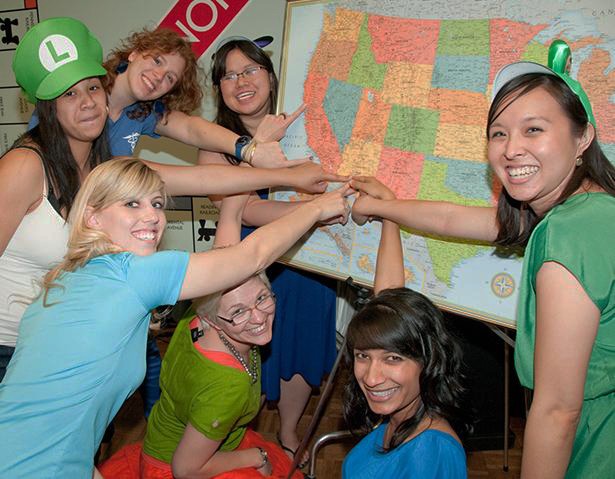For most of this year’s graduates of the College of Medicine, primary care is the primary destination.
The class includes 149 students from both the Tucson and Phoenix campuses. Of that 149, 69 graduates will go into primary care, 25 into family medicine, 21 into internal medicine and 23 into pediatrics. Three students will spend a preliminary year training elsewhere, then return to the UA College of Medicine to complete their residencies.
Students received the results of their residency matching during the college’s annual Match Day event.
The nationwide event puts students at a location where they will complete their residency. The day doubles as a ceremony, and National Resident Matching Program results are released at ceremonies on the same date and time throughout the nation.
The Match Day ceremony began with a short skit put on by students in the College of Medicine. At the end of the skit, students drew from an envelope containing letters with their results. Each student had to place a dollar in a jar upon opening their letter, and the last student that was called to open their envelope collected the money, which amounted to nearly $100.
Uma Goyal, a fourth-year medical student, will spend a preliminary year at Loma Linda University in California, then return to the UA to continue her residency in radiation oncology.
“It (radiation oncology) is one of the most competitive specialties you can match into regardless of whether the university was my first choice or last,” Goyal said, “and just the fact that I got matched into radiation oncology was exciting.”
After five years of residency, Goyal said she hopes to become a registered radiation oncologist and have the opportunity to combine working with patients and doing research.
“I couldn’t believe I got matched into what I want,” she said. “I was jumping up and down with joy.”
Students will pursue residencies in anesthesiology, dermatology, emergency medicine, family medicine, internal medicine, neurology, orthopedic surgery, pathology, pediatrics, radiation oncology, diagnostic radiology, surgery and urology.
The length of residency training varies by program, said Dr. James Kerwin, a specialty family medicine doctor at the University of Arizona Medical Center — South Campus and an assistant professor of family and community medicine. Residencies in general medicine take three years to complete, while most specialized surgery residencies take close to eight years, Kerwin added.
Institutes with residency programs can only accept a certain number of students into their programs, so some students apply for residencies in their fourth year of medical school, he said.
Sigrid Gardner, a fifth-year medical student, will complete her residency at the University of California, San Francisco, in obstetrics-gynecology.
Gardner said she hopes to pursue a career in public health, health policy and advocacy where she can work with underserved communities. She is excited to do so, she said, because it will give her the privilege of serving women experiencing life-changing events, like having children.
“I wanted to be sure I read it (the results) correctly, so I made myself read the results twice before reading them aloud into the microphone,” Gardner said. “It seemed almost too good to be true, and I couldn’t help but cry for quite a while after finding out the news.”
As many medical students prepare to leave Arizona for their residencies, Nathan Copeland, a fourth-year medical student, was matched to stay at the UA to do his residency in internal medicine.
“They tell you a week before (the event) that you have been matched but not to where,” Copeland said. “So it’s nerve-wracking having to wait to hear your results.”
After his residency, Copeland said he wants to receive his medical license, which will allow him to work in any state. Although Copeland is nervous about where he will spend the next three years, he is happy just to have a job, he added.









